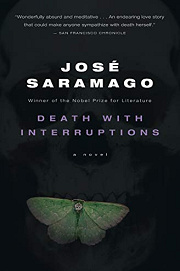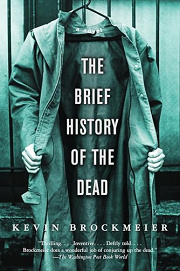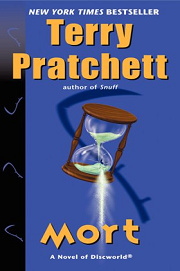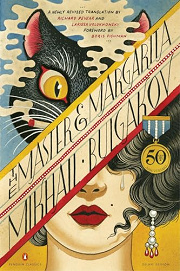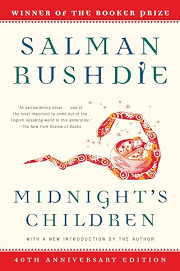Share your thoughts in a quick Shelf Talk!
Death with Interruptions by José Saramago
One morning, death simply stops—and the world must learn how to live with the consequences. Bureaucrats, philosophers, and ordinary people wrestle with a miracle that quickly becomes a crisis. Death with Interruptions is a wry, humane, and haunting reflection on mortality, delivered with sly humor and graceful imagination.
Have you read this book? Share what you liked (or didn’t), and we’ll use your answers to recommend your next favorite read!
Love Death with Interruptions but not sure what to read next?
These picks are popular with readers who enjoyed this book. Complete a quick Shelf Talk to get recommendations made just for you! Warning: possible spoilers for Death with Interruptions below.
In Death with Interruptions, did you enjoy ...
... a metaphysical thought experiment about death reshaping private lives and public systems?
The Brief History of the Dead by Kevin Brockmeier
If what hooked you was how, on New Year’s Day, no one dies and Saramago turns that premise into a meditation on meaning—then narrows to death’s violet letters and her bond with the cellist—The Brief History of the Dead will resonate. Brockmeier imagines a city where the dead persist only as long as someone among the living remembers them, following Laura Byrd’s polar journey while society and the afterlife shift around her. Like the state–church negotiations and the “maphia” euthanasia ring in Death with Interruptions, this book probes how communities, ethics, and memory reorganize when mortality’s rules change.
... a wry, humane portrayal of Death as a character facing paperwork, ethics, and love?
Mort by Terry Pratchett
If you smiled at Saramago’s deadpan scenes of ministries, bishops, and undertakers scrambling after death stops—and at the way Death herself fumbles with human feelings for the cellist—then Mort is a delight. Here, Death hires an apprentice, Mort, and the job’s tidy certainties unravel when Mort decides not to collect a princess. The fallout—bureaucratic bottlenecks, moral quandaries, and a very personable Grim Reaper—mirrors the comic, tender tension you enjoyed in the violet-letter era when fate becomes a matter of administration and empathy.
... the supernatural barging into ordinary life to lampoon authority and expose human folly?
The Master and Margarita by Mikhail Bulgakov
If the surreal audacity of death personified—sending missives, going incognito, and upending a whole country’s routines—was your favorite part, The Master and Margarita hits the same pleasure centers. Woland and his chaotic entourage descend on Moscow, staging a magic show that humiliates the pious and the powerful, much as Saramago skewers the prime minister–cardinal alliance and the funeral trade when immortality breaks the script. It’s exuberant, uncanny, and uses the fantastic to pry open the hypocrisies of real institutions.
... a playful, all-seeing narrator who sweeps across many lives with digressive wit?
Midnight's Children by Salman Rushdie
If you loved the genial, omniscient voice that drifts from officials to families to Death and finally lingers with the cellist—offering asides, loops, and sly commentary—Midnight’s Children offers similar narrative pleasures. Saleem Sinai tells his story with panoramic omniscience, linking his life and the telepathic midnight-born to the fate of a nation. The voice is expansive and mischievous, echoing the way Saramago’s narrator can pivot from the “maphia” to ministers to a single apartment where Death learns what sleep feels like.
... satire of institutions flailing in the face of mortality and modern dread?
White Noise by Don DeLillo
If the funniest parts for you were institutional absurdities—the state and the church negotiating procedures for a world without funerals, or the grim entrepreneurial boom around the undying—then White Noise is a sharp next step. After an “airborne toxic event,” Jack Gladney’s town is flooded with experts, warnings, and dubious fixes, while Jack and Babette chase a pill that promises freedom from fear of death. It’s the same comic-bleak register as the panic and profiteering that erupt between New Year’s Day and the return of those violet envelopes.
Unlock your personalized book recommendations! Just take a quick Shelf Talk for Death with Interruptions by José Saramago. It’s only a few questions and takes less than a minute.
